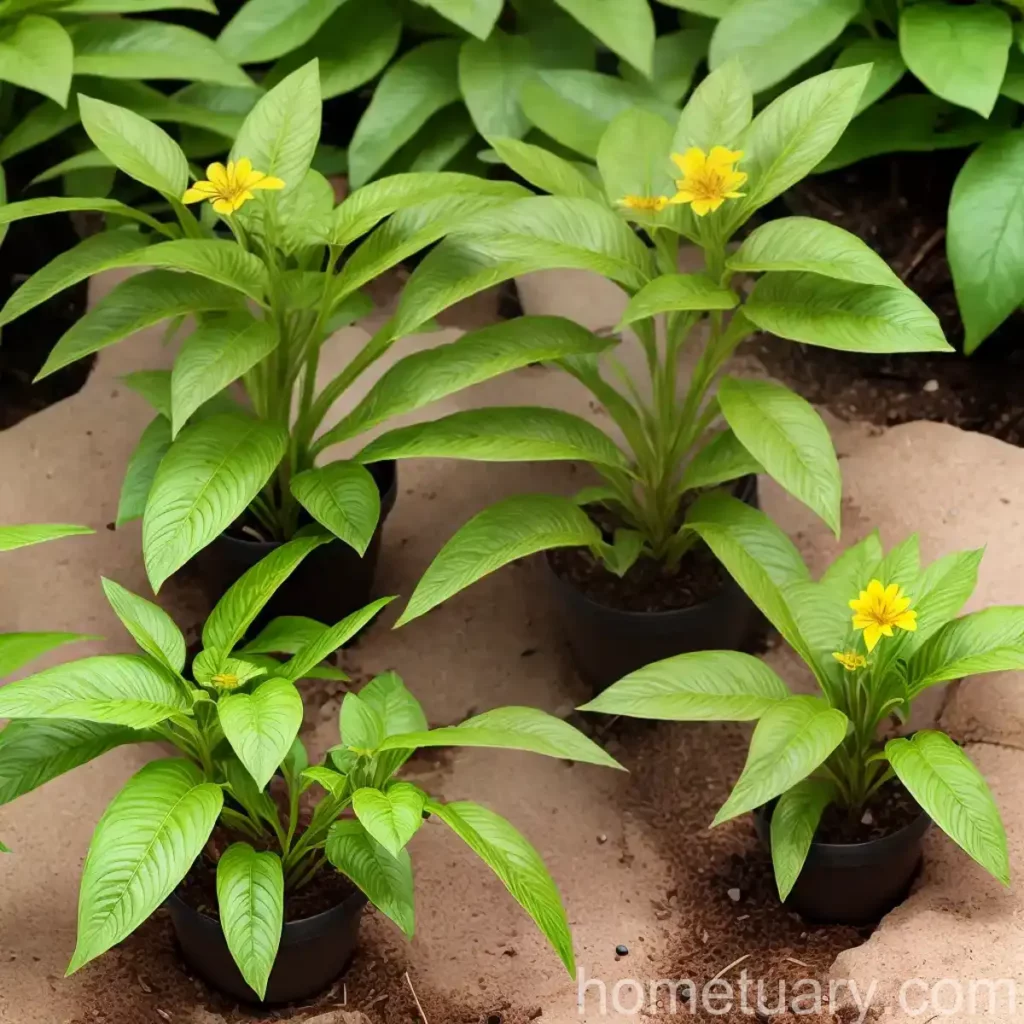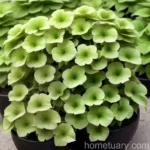American Ipecac (Gillenia stipulata): A Comprehensive Guide
Plants have always been a source of immense fascination. The way they grow, adapt, and thrive in diverse environments is truly captivating. One such plant that stands out for its unique qualities is the American ipecac, scientifically known as Gillenia stipulata. This article aims to delve into the depths of this fascinating plant, covering its culture, uses, and more. As a plant scientist, I have had the privilege of studying this beautiful plant and can’t wait to share my knowledge with you.
What is American Ipecac (Gillenia stipulata)?
American ipecac, also known as Indian physic, is a herbaceous perennial plant that belongs to the Rosaceae family. Native to Eastern North America, it can be found growing in woodland clearings, open woods, and along stream banks. This plant is cherished for its delicate, star-shaped flowers and its historical medicinal uses.
Key Takeaways – American Ipecac (Gillenia stipulata)
Before we dive into the specifics of this alluring plant, here are a few key takeaways that will guide our discussion:
- Scientific Name: Gillenia stipulata
- Common Names: American ipecac, Indian physic
- Family: Rosaceae
- Native Habitat: Eastern North America
- Habitat: Woodland clearings, open woods, stream banks
Culture
Uses
American ipecac has been historically used by Native Americans for its medicinal properties. Traditionally, it was used as an emetic, to induce vomiting, and to treat conditions such as dysentery, asthma, and other respiratory issues. However, it’s important to note that the plant contains toxic compounds and should not be used without proper expertise and guidance.
Water
In terms of water requirements, American ipecac thrives in moist, well-drained soils. It is essential to provide adequate moisture, especially during dry spells, to support healthy growth. However, it’s crucial to avoid waterlogged conditions as this can lead to root rot.
Sunlight
When it comes to sunlight, American ipecac performs best in partial shade to full sun. In its natural habitat, it often grows in woodland edges where it receives dappled sunlight. Thus, providing similar light conditions in a home garden or landscape setting can promote optimal growth.
Fertilizer
American ipecac typically does not have high fertilizer needs. However, applying a balanced, general-purpose fertilizer in the spring can provide a boost to growth and blooming. It’s important to follow the recommended application rates to prevent over-fertilization, which can be detrimental to the plant.
Soil
This plant prefers slightly acidic to neutral soils with good drainage. Rich, loamy soils are ideal for American ipecac. Amending the soil with organic matter such as compost can further enhance its growing conditions.
Pruning
Pruning American ipecac is relatively minimal. It may benefit from light grooming to remove spent flower stalks and any dead or damaged foliage. Additionally, the plant can be cut back in late fall or early spring to encourage fresh growth and maintain a tidy appearance.
Propagation
American ipecac can be propagated through division or by collecting and sowing its seeds. Division is best done in the early spring, and seeds can be sown in the fall or after the last frost date in the spring.
Container Popularity
While American ipecac is primarily grown in garden beds, it can also thrive in containers. This is particularly beneficial for gardeners with limited space or those who want to showcase this beautiful plant on patios, decks, or balconies.
Container Common Diseases
When cultivating American ipecac in containers, it is essential to be mindful of potential diseases that can affect the plant. Common issues in container-grown American ipecac may include root rot, powdery mildew, and leaf spot diseases.
Disease Diagnosis
If you suspect that your American ipecac is suffering from a disease, it is crucial to accurately diagnose the issue before implementing any treatments. Consulting a local plant expert or diagnostic laboratory can provide valuable insights and guide you towards effective solutions.
Common Pests
Like many plants, American ipecac can be susceptible to pest infestations. Common pests that may affect this plant include aphids, caterpillars, and slugs. Regular monitoring and the use of natural predators or organic pest control methods can aid in managing pest populations.
Botanist’s Tips
As a plant scientist with a deep appreciation for American ipecac, here are a few additional tips to help you cultivate and appreciate this plant:
- Wildlife Attraction: American ipecac’s delicate flowers attract pollinators such as bees and butterflies, making it a valuable addition to wildlife gardens.
- Companion Planting: Pairing American ipecac with other shade-loving plants such as hostas, ferns, and astilbes can create visually stunning and harmonious garden compositions.
- Ethnobotanical Considerations: Exploring the historical uses and folklore surrounding American ipecac can provide a deeper understanding of its cultural significance and traditional medicinal applications.
Fun Facts
To add a touch of delight to your American ipecac journey, here are a few fun and intriguing facts about this remarkable plant:
- American ipecac was historically used by Native Americans as a medicinal herb, highlighting its cultural and traditional significance.
- The plant’s delicate, star-shaped flowers bloom in shades of white to light pink, adding a graceful charm to garden landscapes.
- American ipecac’s ability to thrive in shaded environments makes it a valuable addition to woodland and shade gardens.
Now that we have covered the cultural insights, plant utilization, and botanist’s tips, let’s explore how to grow and care for American ipecac in a home garden or landscape setting.
Growing American Ipecac (Gillenia stipulata)
Characteristics
American ipecac is characterized by its elegant, slender stems that bear delicate, star-shaped flowers. These flowers, which bloom in late spring to early summer, create a captivating display with their light hues and airy appearance. Additionally, the plant’s finely-cut foliage adds an ornamental element to its overall aesthetic.
Benefits
Beyond its ornamental appeal, American ipecac offers several benefits that make it a valuable addition to gardens and landscapes:
- Wildlife Value: The plant serves as a nectar source for pollinators, contributing to the biodiversity of garden ecosystems.
- Natural Remedy Potential: While the plant’s medicinal uses require careful consideration, it is fascinating to explore its historical and potential modern applications.
Cultivation
When cultivating American ipecac, it is essential to consider the following factors:
- Hardiness Zones: American ipecac is well-suited to USDA hardiness zones 4-8, making it adaptable to diverse climatic conditions within this range.
- Growing Tips: Providing consistent moisture, partial shade, and well-drained soils can support healthy growth and flowering.
Flowering Period
American ipecac typically blooms from late spring to early summer, gracing garden landscapes with its ethereal flowers during this time. The blooming period adds a touch of charm and elegance to outdoor spaces.
Habitat
In its natural habitat, American ipecac thrives in woodland clearings, open woods, and along stream banks. Recreating similar habitat conditions in a garden setting can mirror its native environment and promote optimal growth.
Perennial Nature
As a perennial plant, American ipecac returns year after year, providing a reliable and enduring presence in garden landscapes. When given suitable growing conditions, it can establish itself as a resilient and long-lasting component of the plant community.
American Ipecac (Gillenia stipulata) and Beyond
Herbal Medicine
Beyond its ornamental and ecological value, American ipecac holds significance in the realm of herbal medicine.
- Traditional Uses: American ipecac has historical ties to traditional medicine, particularly within Native American and Indigenous practices.
- Medicinal Properties: The plant’s roots have been utilized for their medicinal properties, albeit with caution due to the toxic compounds they contain.
Wildlife Habitat
By serving as a habitat and food source for pollinators, American ipecac contributes to the vitality of wildlife ecosystems. This reinforces its ecological importance beyond its aesthetic and medicinal attributes.
Landscape Uses
American ipecac offers diverse landscape applications, including:
- Woodland Gardens: Its affinity for partial shade and woodland-like environments makes it a natural fit for woodland gardens and shaded landscapes.
- Native Plant Landscaping: Incorporating American ipecac into native plant landscaping initiatives contributes to the preservation of regional biodiversity.
Native Wildflower
Embracing the native wildflower status of American ipecac acknowledges its intrinsic connection to regional ecosystems and emphasizes its relevance in conservation efforts.
Conclusion
In conclusion, American ipecac (Gillenia stipulata) is a plant that embodies beauty, history, and resilience. From its delicate flowers to its cultural significance, this herbaceous perennial plant has much to offer to gardeners, botanists, and enthusiasts alike. By understanding its cultural uses, growing requirements, and ecological relevance, we can gain a deeper appreciation for the diversity and wonder of the plant kingdom.
I hope this comprehensive guide has provided valuable insights into the captivating world of American ipecac. Whether you are considering adding this plant to your garden, exploring its historical uses, or seeking to enhance your botanical knowledge, American ipecac offers a rich tapestry of exploration and discovery.
As we continue to celebrate the marvels of nature and the plants that enrich our lives, may the beauty and resilience of American ipecac inspire us to cultivate a deeper connection with the natural world.
Links to External Resources
To further your exploration of American ipecac and related topics, here are some external resources that offer additional insights and knowledge:
- Native Plants for Wildlife Habitat and Conservation Landscaping: Chesapeake Bay Watershed
- Medicinal Plants of the Southern Appalachians
- American Ipecac: A Gardener’s Guide
These resources provide valuable information on native plants, medicinal herb cultivation, and specific plant profiles that can enhance your understanding of American ipecac and related botanical subjects.
In this comprehensive guide, we explored the intriguing world of American ipecac (Gillenia stipulata), delving into its cultural significance, growing requirements, and ecological relevance. By embracing the multifaceted nature of this plant, we gain a deeper appreciation for its beauty, historical uses, and enduring presence in the natural world. Whether as a garden adornment, a botanical curiosity, or a symbol of resilience, American ipecac enriches our lives and reaffirms the wonder of the plant kingdom. Join the conversation and share your experiences with American ipecac as we celebrate the marvels of nature and the enduring allure of plants.















